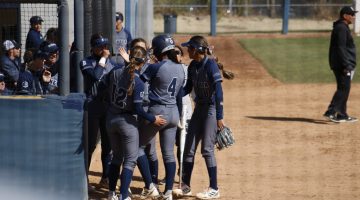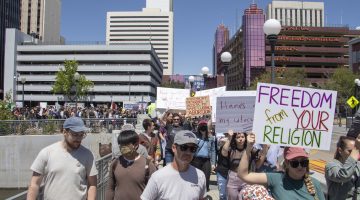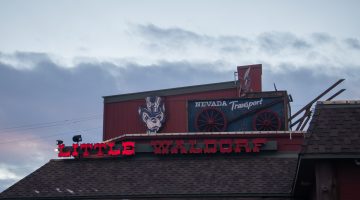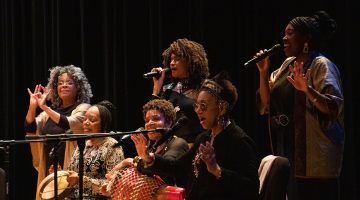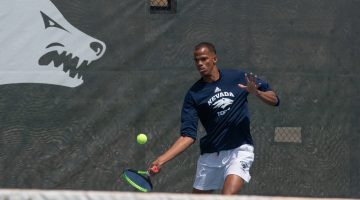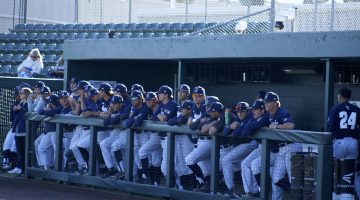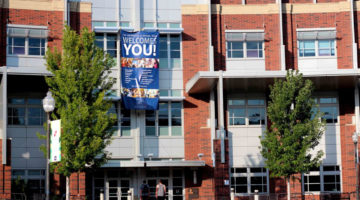By Jacob Solis
With Nevada’s third-in-the-nation presidential nominating contest fast approaching, campaigns across the state are intensifying their operations in a last-ditch effort to get out the vote. Its caucus is the first in the West and has subsequently drawn campaigns far and wide to the Silver State in an effort to gain some momentum going into Super Tuesday at the beginning of March.
In Reno, campaigns, interest groups and advocacy groups alike have been setting up dozens of caucus trainings in the runup to the caucus itself. One of these trainings made its way to the third floor of the University of Nevada, Reno’s Joe Crowley Student Union. There, nearly a dozen students and a community member or two sat for half an hour’s worth of information on the more-than-a-little confusing caucus process.
A representative from the American Federation of State, County and Municipal Employees, one of the training’s co-sponsors, stood in the front of the room and made his way through a small packet that had been distributed to everyone in the room. He covered everything from why the caucus is important to how the caucus actually works, stopping along the way for any questions.
Iris West, assistant director of the Latino Research Center at the University of Nevada, Reno and one of the organizers of that particular training, emphasized the importance of voting as the reason for putting the training on.
“For me, it’s a civic duty,” West said. “I come from a place where the right to vote was suppressed, so I do appreciate to have that and I think that everybody should. Having the right to vote, for people in my country, didn’t come for free. It was something that cost blood and the lives of others.”
For concerned citizen and registered Democrat Peggy Bohn, the training provided an opportunity to prepare for her first Democratic caucus in eight years. More generally though, the caucus provides Bohn with the opportunity to talk through her own voting decision with fellow voters.
“When I originally walked into the building [in 2008], I was leaning toward a particular candidate, but by the way that my questions were answered I did not go to that candidate,” Bohn said. “I’m pretty sure who I’ll go with [this year], but I was pretty sure eight years ago. Then I went to the caucus and my mind was changed.”
For student Alejandra Hernandez Chavez, the caucus is a great way to get face-to-face with neighbors and talk bluntly about the issues facing everyone in the community.
“I like the engagement that you see during a caucus as opposed to a primary where you just vote,” Chavez said. “Off of that, I kind of like the community aspect. You actually get to talk to people and see what different opinions the people that live around you have.”
That being said, caucusing is not such a simple endeavor, nor is it necessarily that easy to understand, case in point being the numerous amount of caucus trainings happening all across the state.
The caucus, as demonstrated just a week ago in the Hawkeye state, is a slew of small gatherings on a precinct level. These precincts each elect delegates based on what proportion of people caucus for a candidate. Delegates, it should be noted, are elected right after the caucus is over at each and every precinct location.
On the Democratic side, thousands of delegates are chosen to go to the county and later state conventions. Both these conventions narrow down the final number of pledged delegates, or delegates who are bound to vote for a certain candidate at the national convention, to 35 for the Democrats and 30 for the Republicans.
It should be noted that the Democrats also use a great number of super delegates, or delegates who are not bound by law to vote for any particular candidate, in their nomination process. Nevada has eight and their ranks include elected representatives, like Rep. Dina Titus and Sen. Harry Reid, as well as other party leaders.
This complexity has drawn plenty of criticism of the caucus as a nomination method, and that criticism has been compounded by some questionable election practices in Iowa. Coin flips and head counts have drawn the ire of talking heads across the nation and have formed the crux of the criticism facing the caucus. More than that though, few people actually come out to caucus, which often means that the most radical voters have the most say.
Though Nevada Democrats have been caucusing since 2000, the state first instituted the caucus for both parties in 2008, the same time that it was gifted its third-in-the-nation spot by both the Democratic and Republican national committees. That year saw huge turnout for the Democrats as 118,000 people caucused — more than 12 times the amount of caucus goers in 2004.
Turnout for the Republicans, however, was less than stellar. A little over 44,000 Republicans turned out for the caucus — just 9.2 percent of all registered Republicans at the time. More pitiful turnout in 2012 has led some commentators to question whether or not Nevada might keep its third-in-the-nation spot in 2020, though neither party has made a decision yet and likely won’t for some time.
Nevada’s Democratic caucus is on Saturday, Feb. 20, while the Republican caucus is on Tuesday, Feb. 23. Both are closed caucuses, so anyone wishing to caucus needs to be registered for a party by the day of the caucus for the Democrats or by Feb. 13 for the Republicans.
Jacob Solis can be reached at jsolis@sagebrush.unr.edu and on Twitter @TheSagebrush.


